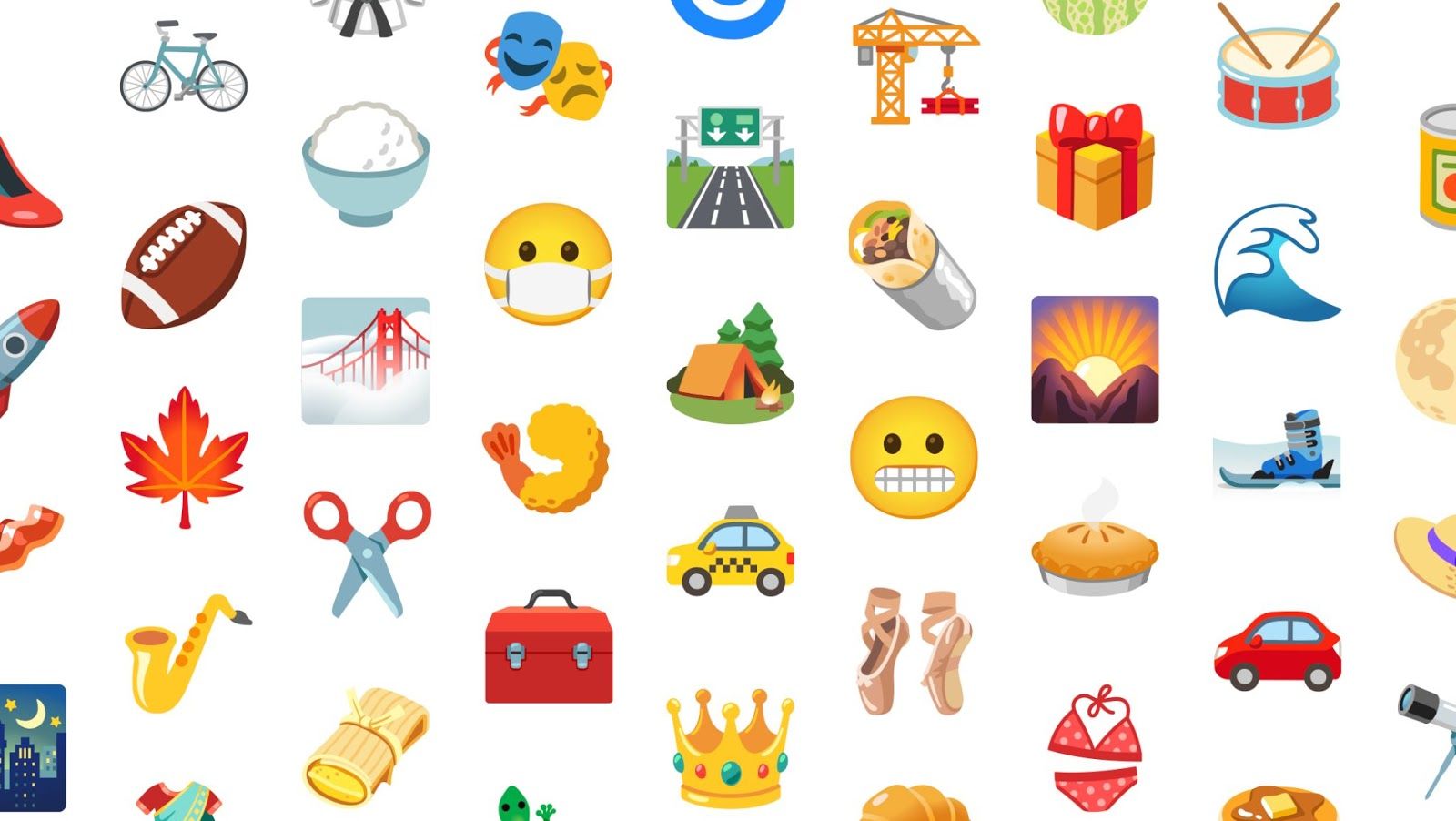Read update
- More information from Google
A new Android release usually means new Emoji, and Android 12 is no different. Google has just announced that it's rolling out the changes we spotted yesterday in Android 12 and other Google services like Gmail, Chat, and Chrome OS. That includes 992 redesigned emoji and some of the new (delayed) ones in the Unicode 14.0 standard. Google also tells us that apps will soon be able to harness new emoji separately from system updates. Originally, we were concerned that this was just a rebadging of the older EmojiCompat feature, but after speaking to Google a little more in-depth about it, that's not the case. It sounds like this might actually make a difference, and even older phones will get in on the action.
Among the changes in this new release are an updated mask emoji that looks a little less sick and unhappy — appropriate given the last year and a half spent behind them. But the general look is to make things flatter, reducing 3D-effect gradient effects in many (but not all) cases while also enhancing contrast and colors for a bit more "pop." Some changes are less realistic, others are more. A few examples look almost like posterized photos, while others are cartoonish. In short, it's not exactly consistent, but it is a little more modern. But, with emoji covering such a wide variety now, it's impossible for them all to match precisely the same style anyway — they'd look terrible if Google tried to force that.
Some of the changes make things a little more accessible, like "pie," which covers a wider range with its new design, rather than just pumpkin — though I maintain, pumpkin remains the best pie. The same goes for the new bikini, which ditches body implications by being a little more free-form. The new car and truck emojis are less realistic, but easier to understand visually at a tiny size thanks to exaggerated scaling. Other changes are just so emoji make more sense, like a new motorway/road emoji that doesn't misuse yellow lines. But even basic food emoji just look a little more appetizing in Android 12.
The new emoji aren't just coming to Android 12, either. Google's rolling them out to other services, too, including Gmail, Chat, Chrome OS, and YouTube Live Chat as early as this month.
Google is also rolling out a big and long-awaited change to how new emoji are rolled out to Android phones. Rather than waiting on system updates, Google is decoupling them to be updated separately as part of the GMS — that's the fancy term for Google's proprietary whipped cream and cherry software on top of Android's open source ice cream. Basically, emoji are going to be a part of Play Services.
I know, we've heard this before when EmojiCompat was first announced, and at first I thought this announcement was just a rebadging of that, but I was mistaken. I got the chance to speak to some folks at Google about the changes that are happening, and they are actually a big deal, and I'm told the benefits will be available to most apps on the Play Store — an explanation which will make sense once you understand how this works.
The new changes roll the old EmojiCompat support library into the Appcompat module in Jetpack, probably at least partly leveraging other tweaks that decouple a few related system directories, which telegraphed Google's emoji plans at the beginning of the year. But that's not just a rebadging of the old feature, as we first thought. Google tells us these changes mean it's not something developers have to specifically target to take advantage of. Because most apps on the Play Store use Jetpack and Appcompat, most apps should basically just get this change, and enjoy the benefits of new emoji without as much work as was necessary before. Previously, only first-party apps like Gboard and Messages seem to have taken advantage of EmojiCompat.
We also asked Google why something like a Mainline module wasn't implemented instead, and we're told that this way, via Play Services, is actually better. Play Services has faster and more frequent updates, so changes can land more quickly, and it means it will work on older devices, too — a mainline module rolling out with Android 12 would exclude all of them.
We'll still need to see precisely how this pans out to be sure if it will work, but it sounds like Google has thought it through and could finally deliver on its promises since 2017 to bring new emoji to old phones.
Lastly, AP's Stephen Schenck would also like it known that Google's spelling of "emoji" for even plurals in today's announcement is objectively correct.
UPDATE: 2021/07/16 12:48pm PDT BY RYNE HAGER
More information from Google
Google has provided us with more information about the emoji-related tweaks, and based on the information we have, it sounds like it's more than just a rebadging of EmojiCompat (though that's still a part of how it works).
Our coverage has been updated with a more detailed explanation.


